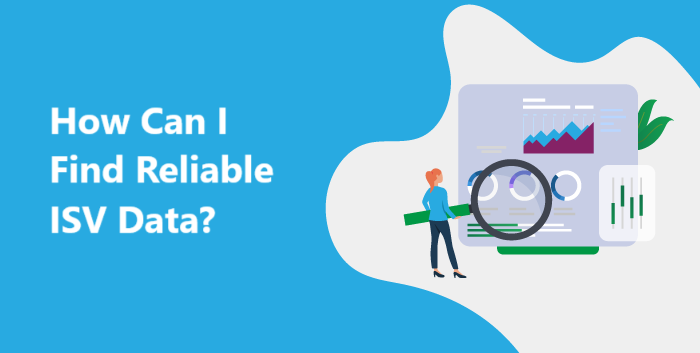Content-driven marketing is starting to feel like a kind of contest — who can have the most content that is the most liked or the most shared, that is the most relevant to the most people. It’s like everyone is trying to one-up everyone else by having the most posts on the most channels. But is this race for relevance falling on deaf ears? Are people even paying attention in the day and age of information overload?
The more information we are exposed to, the less of it we can actually process; our brains want to make sense out of all this data, and yet simply cannot. Which means much of the information we are exposed to is just getting filtered out before it even gets in. The personalization of our experiences online is only making the situation worse rather than better. While the solution to the information overflow in the digital age was supposed to be smart, personalized access to content, our screens are becoming one-way mirrors, reflecting our own content desires while algorithms pick-up on our clicks and further filter out what they think we don’t care to see. We’re living in an era of “the filter bubble” where chance encounters with content are non-existent; without knowing it, the content we are exposed to is becoming more homogeneous, and one-sided (tilting to the side we were leaning towards in the first place).
In fact, it’s scary to think that our exposure to new ideas (which is the driving force behind inspiration, innovation and creativity) is purposely being limited. For myself, I find that the “news” I’m getting online (and especially on social media) is getting worse by the day. Eli Pariser writes in his book The Filter Bubble, “If we’re not careful, we’re going to develop the psychological equivalent of obesity. We’ll find ourselves consuming content that is least beneficial for ourselves or society as a whole.”
I think that is true. People have the tendency to like things that are scandalous, sexy, violent, grotesque — things that provoke strong emotions, or are worthy of gossip. And by “liking” those things on social media, we get more of that kind of content while the rest gets filtered out before we even knew it was there. So while marketers are creating more content than ever, less of it is getting seen because (1) we filter it out ourselves, and (2) algorithms filter it out for us.
So what can be done? How can marketers get their content seen by the right people and get them to engage? How can we get past attention crash and the filter bubble and get our messages across?
Here are our top five tips to make your content relevant:
1. Know who you’re targeting
You may think you know your audience, but taking the time to develop buyer personas in the form of readable stories is one of the most effective ways you can prove it. The purpose of doing this exercise is for you to truly put yourself in the shoes of your ideal customer to understand what motivates them, what challenges they face, and what influences their purchasing decisions; this will help tailor your key marketing messages to position your offer in a way that will best serve them. It will also help assess perspective to ensure that your customer’s attitudes match yours. This is important in order to align priorities, and better position your business resources who may serve one type of customer better than another.
Here are some questions to get you started:
- What is the person responsible for?
- What is their experience?
- What motivates them at work?
- What type of company do they work for?
- Can you describe their demographic (age, gender, income, family status, location)?
- What are their preferred communication channels?
- What’s their professional biggest opportunity? Biggest risk?
- What’s their major fear or anxiety in their role?
- Do they have ambition beyond their current position?
- What is hard for them to do themselves/in-house?
- Where do they get resistance at work?
- What pressures are they facing (from their team, their boss, their industry or their competitors)
- Who do they pay attention to?
- Where do they get information from?
- What are their go-to websites or podcasts?
- What part of their job can you make easier?
- What problems can you handle for then?
- How will you make them look good?
- What are their key objections (logistics, budget, lack of authority, they don’t think you’re solution will work)?
Creating powerful content with a compelling message entirely depends on knowing who you are addressing, what their pain points are, and how you plan to solve those issues. When you’ve taken the time to really understand the key buyer personas you want to target, creating content with them in mind will be a lot easier.
2. Develop a plan
As Laura Hanly writes in her book Content that Converts, “Don’t publish without a plan. Every piece of content that comes out of your business needs to serve a clear, strategic purpose, both for you and your customers.” Creating a content calendar can help you organize your goals, and enable you to more easily delegate tasks to other people (inside your organization or with the help of outsourcers). It is important to include a diverse range of content types (blogs, vlogs, or podcasts in addition to e-books, whitepapers, or guides) and themes that you are inspired by. You will have a hard time creating content if the medium itself is not something you’re excited about.
3. Get the timing right
While having a plan is important, it’s also necessary to be flexible at times and deviate from it should some major event happen. Timely articles relating your offer to newsworthy events will help attract attention to your content, so it’s a critical part of creating content that converts. If your content is immediately useful, it will get more attention.
4. Think agile
Regularly analyzing how your content is performing, and taking stock of your offer in relation to your target market, will help you stay ahead of the game. If certain online channels are not giving you the return you want, then stop using them and focus on the ones that do. In today’s marketing world, it’s important to try, test, then continue or pivot; in fact, our best practices mimic the principles of agile development for software start-ups. Eric Ries, author of The Lean Start-up, writes, “The fundamental activity of a startup is to turn ideas into products, measure how customers respond, and then learn whether to pivot or persevere. All successful startup processes should be geared to accelerate that feedback loop.” The same is true for marketing activities.
5. Don’t be afraid to express your opinion
In B2B marketing we’re often afraid to say what we think. We’ve been taught to be diplomatic, and neutral — kind of like Switzerland. But the key to creating powerful content is by expressing an opinion. It’s not enough just to tell a story, or to state fact — it’s important that people know what your company stands for so that they feel compelled to follow you (or run away). Showing your company values in your content, expressing opinion in your blogs, and not being afraid to put yourself out there is a necessity in order to make your voice heard (and your content read).
Conclusion
Content bombardment online is not going to go away, and we all need to be very conscious that what could be filtered out may be the key to giving us that next Einstein-like idea. When consuming content, we need to create a balance between what we want and what’s “good” for us — kind of like making sure we eat vegetables instead of a steady diet of burgers and fries. And when creating content, keep in mind what your audience wants; if your content is boring or irrelevant, it will surely get caught in the filter bubble one way or another.










